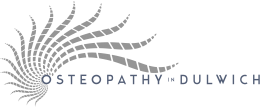WHAT TO EXPECT
First appointments usually last around 60 mins.Osteopaths use their hands to diagnose and treat conditions using a finely developed sense of touch called Palpation.
ADULTSIt starts with taking a case history to record the reason you have booked your appointment your symptoms, medical history and relevant details of your life, including other operations, illness, accidents or falls. This is followed by a detailed examination of the problem area and other relevant areas, you may be asked to undress to your underwear, or as far as is necessary to assess your posture and any areas of tenderness or restricted movement . It is important that the Osteopath is able to gather as much relevant information as possible, medical gowns are available alternatively feel free to bring a vest top and some shortsYou will be asked to perform a range of simple movements to determine what aggravates the symptoms and your degree of mobility. These are important to discover the probable cause of your pain. Additional orthopaedic and medical tests may be carried out as necessary.The initial consultation aims are to find the cause your discomfort, come to a diagnosis and discuss a plan of treatment to provide you with an idea of how quickly you may expect to improveWith your permission, treatment is usually provided at the first visit if safe and appropriate to do so. Osteopaths use their hands to encourage changes in the body tissues to help alleviate the presenting problem and improve general health. Questions are always very welcome and you will be given opportunities to ask these. If you feel any discomfort, physical or otherwise, you should tell the osteopath immediately and they will do their best to remedy this.You may be offered advice on exercise, lifestyle or your working environment and why these changes or adaptations can help you. You may be sore or tired after treatment, sometimes symptoms may get worse for a short period after treatment before improving. This is normal, if you have any questions or if the pain does not improve please contact us for advice.Sometimes an X-ray or MRI is required to confirm a diagnosis. We work with a number of private medical scanning providers and can refer you to their services if needed. Osteopaths often come across conditions that appear to be musculo-skeletal but may indicate another medical problem, if thats the case or we feel that you would be best treated by another health professional will can refer on or write to your GP
CHILDRENThis initially involves asking a series of questions from the child (if appropriate) and their parent in order to provide a case history. The examination and assessment follows, this is age dependent, an older child may be examined very similarly to an adult, with younger children such as a toddler, examination might involve watching your child play with specific toys, or walking around the building. For this, it us usually preferable to examine the child in nappy/shorts only.Where possible, further examination would take place on the treatment table. However, many young children are examined and treated whilst sitting on a parent’s lap or playing on the floor. Paediatric osteopaths are experienced and adept at working around small children frequent attempts to thwart hands-on contact! We encourage older children to ask questions for themselves and will explain any examination and treatment to them as well as their attending parents.
BABIESWith babies our assessment and examination involves the baby being undressed to their nappy in order to assess their whole body including gentle and specific examination of joints tension. Examination include an assessment of general health and a thorough developmental check. Paediatric osteopaths have undertaken extensive paediatric training so this will be very similar to the check carried out by the paediatrician before discharge from hospital or the GP in the case of a home birth.We can examine and treat babies while they are feeding or being held by a parent, as well as on out traditional treatment table
